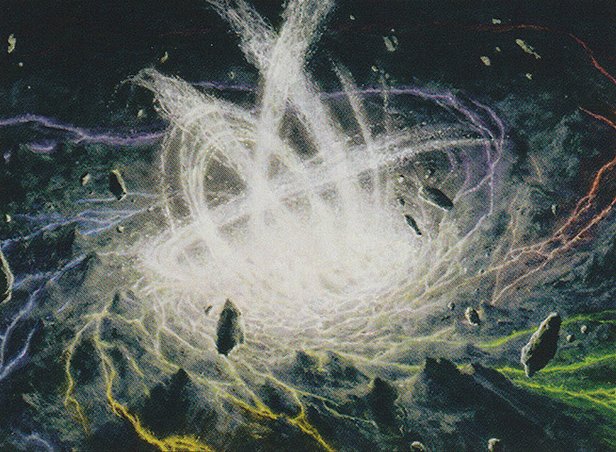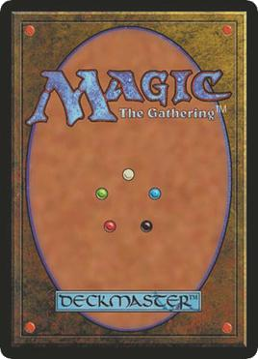 Art by Steven Belledin
Art by Steven BelledinCloned from The Cascade Cube
Hello, friend! Let me ask you a question: how would you feel about starting your next game of Magic with Maelstrom Nexus on the battlefield?
Now, before you start worrying about a Loran of the Third Path or a Nature's Claim, let's turn that Maelstrom Nexus into an emblem. It's permanent, so no one's messing with your core gameplan. Instead, let's think: what you'd like to do with your Cascades?
Excellent! That's a great place to start. Crashing Footfalls, Ancestral Vision, and Sol Talisman are some of the best cards around. As long as you've got enough cheap plays, you can consistently have them on turn 1!
Another fantastic choice! With the power of Maelstrom Nexus, Force of Will goes from a card disadvantage spell to a tempo-positive, card advantage neutral powerhouse! Solitude, Snuff Out, and Once Upon A Time get to be even more powerful!
Cards change context crazily when you're constantly Cascading. Experiment and play around—there's a lot of fun stuff here. Yes, the rules are a little wonky, but you'll have a handy-dandy rules reminder card to help you figure out how every mechanic in the cube interacts with Cascade. Have fun, and remember your Cascaded spells always resolve first!
.
.
.
.
.
.
.
.
.
.
.
.
.
.
.
.
.
.
Hey! Thanks for reading through everything to the end. I strongly prefer to just hand people their Maelstrom Nexus emblem, let them read it, and confirm to them that almost everything they want to do indeed works the way they want. There’s simply too much going on in the cube to explain it all up front—the cube is overwhelming your first time. The best thing to do is give a try, see if you like it, learn a bunch, and try again armed with far more knowledge.
But if you’re reading this, it’s because you probably want a peek ahead. So, here’re some things I like to talk about with people who have already played the cube.
-Average land counts are between 12 and 14. You churn through your deck incredibly fast and your curve is lower than you expect.
-After deckbuilding, take a picture of your deck with everything at its actual mana value in the curve. This is helpful when games go long and you’re trying to figure out whether your 2 drops can Cascade into anything.
-You can splash cards by Cascading into them. It seems random, but it happens more often than you think, and a timely Brainstorm effect can guarantee it. You can do very silly things with expensive cards like Shadow of Mortality and Temporal Trespass (like Cascade into Kozilek, Butcher of Truth).
-Instant-speed spells are amazing. Cascading on both your turn and your opponent’s turn feels like cheating.
-Swords to Plowshares is more of a sideboard card. It’s one of the few cheap spells in the cube that might be uncastable when Cascaded into. More often than not, Seal of Removal is stronger.
-Remember that when you cast your first spell per turn, the thing you Cascade into resolves first. If you cast a creature spell and Cascade into Experiment One, it will almost certainly Evolve immediately.
-Sequencing matters! If you draw Ornithopter, play it after you’ve played something else. Don't waste a Cascade by accident!
-Directly related to that last point, I encourage people to be kind and rewind. This cube is hard. Players take several actions each turn and the state of the battlefield wildly shifts. If there were an advantage bar, it would be a wacky waving inflatable arm flailing tube man.
-There is a lot of effective power in this cube, between 0 mana Suspend spells, pitch spells, free spells, and borderposts, there’s a ton of powerful stuff to do. Yes, the borderposts are outstanding.
-Remember that Cascade is mandatory, but casting the spell you Cascade into is optional. If your Force of Will Cascades into Force of Negation, you can just shuffle it into the rest of the Cascade pile.
-Multicolor cards pitch to everything.
-Every creature with Evoke is an Elemental. Cards like Primal Beyond and Cavern of Souls can be rainbow lands.

